Ninja Clothing
The shinobi shōzoku or ninnikuyoroi was a Ninja suit, made of dark, coarse cloth (gray, dark blue, or black; white-gray in winter) and covering most of the body. In the dark, Ninja were able to blend into the shadows in this way.
The suit was worn rarely because many jobs were better done in normal clothes that were less conspicuous. If a Ninja was caught in his suit, that was certain death. However, when a Ninja was caught as a fisherman or farmer, it was easier to find an explanation.
According to the latest findings, the suit was by no means dark black, because a dark area is more noticeable at night than a dark gray area.
Also, the mask we know today was probably rarely used because it impairs hearing, which was an important ability of the Ninja in the dark of night. Usually, only simple cloths were tied around the mouth area.
In some battles where Ninja fought in battle gear, chain mail was used, worn under or over the shinobi shōzoku. The chain mail also covered the face and palms.
Chikatabi
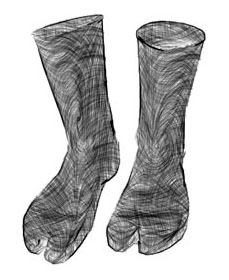
The shoes with the separate toe and non-slip sole were worn because they allowed a secure footing, quiet movement, and better climbing. On ropes, the Ninja could move up quickly with the tabi. To do this, he simply wedged the rope between the separate toe of the shoe and walked up the rope.
Geta
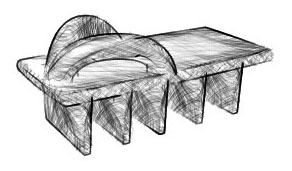
Also yuki waraki. Under the tabi, the Ninja mostly still wore straw sandals or wooden sandals – geta. Steel or wooden blades were fastened under them in winter to be able to walk safely on fresh snow or ice. This is how the Ninja practiced one of his most important skills, his sense of balance.
Hakama
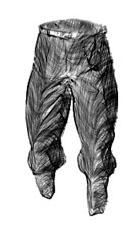
Ninja pants were tied at the knees and ankles to allow for greater freedom of movement.
Hokamuri
Also tenugui or kaiki.
Kaiki
Also tengugui or hokamuri.
Obi
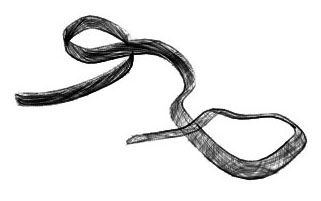
The belt was not actually used but was only added in more recent times, and today it indicates whether you are a student or a master. Rather, a kind of belt was already sewn onto the pants.
Tebukuro
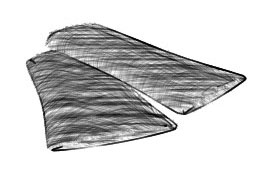
This handguard covered the outsides of the hands and the forearms. When you made fists, you couldn’t see parts of your arms in the dark.
Tenugui
Also hokamuri or kaiki. This approx. 80 cm long cloth could be tied to form a mask or rolled out on the floor so that the floorboards didn’t crack when sneaking, or it could be used to filter water in the dark if the Ninja couldn’t tell what the water looked like. Therefore, the cloth had bactericidal substances in the fibers.
Uwagi
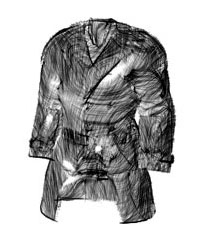
The jacket was tucked into the pants and had hidden inner pockets in which shuriken could be hidden.
Yuki waraki
Also geta.